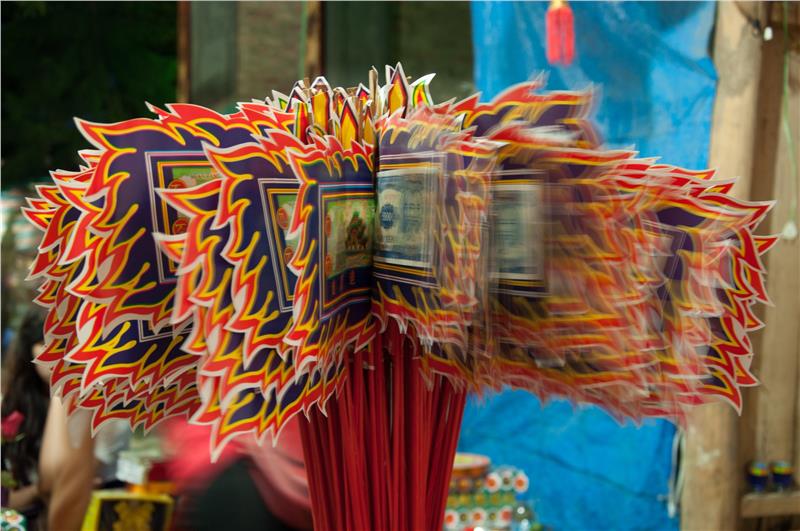Lên đồng, alternately, hầu bóng or hầu đồng ("receiving incarnations of the deities") is a ritual of spirit mediumship practiced in the Vietnamese spiritual culture and Đạo Mẫu - a Vietnamese mother goddess religion. Đạo Mẫu has been a traditional belief of Vietnamese people. The religion has an important and special position in daily life of a country originating from the Wet Rice Civilization. The religion came into being by dint of the wishes of local people who hope good weather, wealthy life, and happiness.

In terms of art, Lên đồng is a folk oratorio form of spiritual culture in Vietnam. In the processes of Hầu đồng, followers become mediums for different deities. Mediums can be men or women. A number of artistic elements are involved in sessions such as music, singing, dance and different costumes. In addition, the invocation songs, or hát văn in Vietnamese are used to induce a trance in mediums. These songs have been described as a particularly noteworthy expression of the performing art of Kinh people. Lên đồng is actually a recurrence of gestures, actions of deities in the combination with songs and music. These actions and ceremonies are considered a cultural complex creating a virtual space with the deities. Therefore, it is impossible to separate artistic elements involving in the sessions of Hầu đồng. It is a harmony in a ceremony summarized and handed down in Vietnam culture. With such special features, the lên đồng ritual itself is seen as an element of Vietnam intangible cultural heritage.

The time of Hầu đồng rituals typically takes place in advance to coincide with a festival, anniversary, or the inauguration of a Mother house, although rituals may be performed at informal occasions. Rituals of Hầu đồng are generally organized in temples, pagodas or similar sacred places. Votive offerings prepared by mediums may include from flowers, cakes and candies to alcohol, cigarettes and jewelry, and some other offerings depending on each places. a number of different costumes purchased by mediums generally to wear during the ritual. Before the main ritual, mediums undergo several days of purifying rituals, involving abstention from sexual intercourse and eating meat. The main ritual may last from two to seven hours. It often begins with petitions to Buddha and to the deities for permission to carry out the ritual.

After that, the medium seats himself or herself in the middle of four assistants. These assistants will facilitate the medium's incarnation of different deities and spirits. Specially trained musicians and singers will perform invocation songs to induce a trance in the medium, at which point he or she will be ready to incarnate different spirits. A medium may incarnate several gods during one session, changing his or her costume and adapting his or her movements to each. Singers and instrumentalists will shift from one musical style to the next depending on which god is being incarnated. When the dance is finished, the audience is allowed to approach the still-possessed medium to make offerings, petition the deity being incarnated in exchange for favours, or to have their fortune told. The medium offers sacred gifts in return, often in the form of joss sticks.

In terms of culture, the heritage of Hầu đồng or Lên đồng should be preserved and honored. Lên đồng is performed throughout Vietnam and in places with high populations of overseas Vietnamese, such as in Silicon Valley, south of San Francisco, California, Italy, France and Australia. Obviously, Lên đồng and invocation songs (or hát văn) are indispensable parts in Vietnam folk culture, especially in religious customs. Also, they are the harmonic combination of cultural, moral values, and national identity spirit. In spring, people go to temples and pagodas to contemplate the unique cultural, religious and spiritual forms of Vietnamese culture; and to pray for best wishes. In many historical and cultural sites, Hầu đồng is an important part in festivals in Mẫu Đồng Đăng Temple, Sòng Thanh Hóa Temple, Tây hồ Temple…
